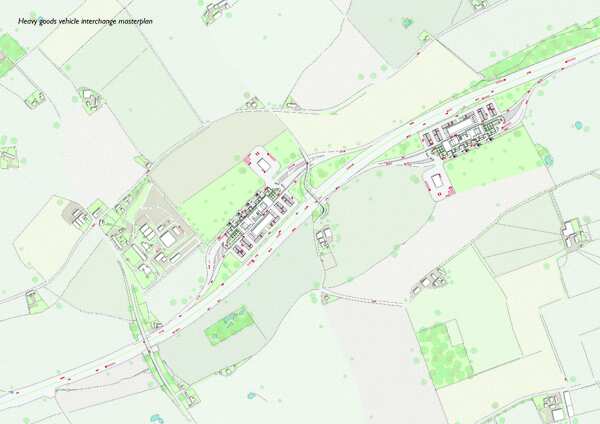In the 1980's Margaret Thatcher famously declared that nothing could stop ‘the great car economy'. Since then transport has become an increasingly radical agent of change, often influencing the layout of cities more than people and leading to mass exurbia. While the car has been an essential element, exurbia also embraces a system of distribution based on road haulage via heavy goods vehicles (HGV’s). Despite advances in logistical science and recent National Travel Survey results highlighting the peak car concept, with private car journeys and mileage beginning to decrease since the early 2000s, an outdated service station architecture continues to inadequately support the transient public it prioritises and reliant, regulated HGV workforce.
My contemporary service station will therefore aim to support HGV drivers through a typology that responds to the strict working/resting legislation they are governed under. I would like to propose a service station that facilitates an AI-driven, high efficiency, interchange between drivers and HGV’s (cabins and trailers if applicable). The underlying principle will be to maintain freight movement, as regulations state the driver must rest, but a rested driver can take over and complete or continue the deliveries journey. Simultaneously, resting drivers will have a comfortable space to disconnect, relax, socialise, have fun, and focus on themselves. These facilities will vary depending on the length of a drivers stay, however, at a minimum, encourage drivers to leave their truck/cabin and live a more healthy, well-balanced lifestyle.
The culmination of a healthy and happy workforce will not only improve driving, safety and productivity but reduce transport times, enhance economic growth, and stimulate greater capital flow. Drivers can expect increased income and access to work and consumers globally to receive products sooner, a convenience current models such as Amazon Prime have proven to be desirable.


